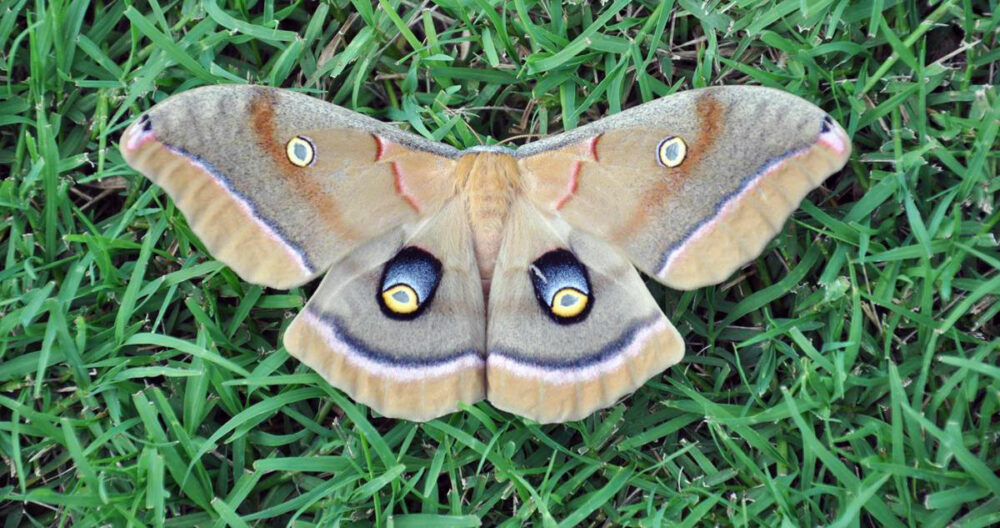by Christine Maccabee
Where Have All the Large Moths Gone?
I will begin this article by asking a question: Have you seen many large moths, such as the luna, cecropia or polyphemus, these days? I am starting to research moth populations in upper Frederick County, and I would appreciate knowing of your sitings of these beautiful, large moths, as well as the slightly smaller ones, such as the gorgeous sphinx in the family of hawk moths.
I guess you might say my research started in high school in my back yard, south of Baltimore. It was there that I discovered a few fascinating green caterpillars of large moths. I put them in gallon jars with appropriate leaves, resupplying with fresh ones as needed. I watched the awesome green caterpillars grow to full size until they spun their cocoons, and I was rewarded for my efforts by seeing them emerge from their large cocoons in the spring. Of course, the best part was freeing them to fly away, back into my yard and sky beyond.
Since then,
my personal sitings have been quite rare. Smaller moths of many species—some
with colorful patterns, others quite plain—have found sanctuary on my property,
yet, no large moths. When I say large, I mean with wingspans up to six inches.
Just this past summer, I did see evidence of the luna moth up here in the
mountains, but it looked like it had been shredded by either a predator or a
mower. Where there is one dead luna moth, there will hopefully be a few more
live ones!
Last month, I read an article in the National Wildlife magazine about the
importance of litter (meaning dried leaves), dried stem of plants, and general
yard debris, for the ongoing cycles of a host of wildlife species. In her
article, “Life in the Litter,” Emma Johnson confirmed my understanding by
writing about the importance of leaving litter in our gardens, where many
insects (including moth pupae) go into a hibernation-like state called
diapause, lying dormant until the ground warms. “ I will add that it is likely
a death sentence to heap up thick mulch around our plants and trees, possibly
inhibiting the emergence of these moths.
Fortunate to own property way off the track, I don’t care if my gardens portray a littered look. Unfortunately, in a suburban or city environment, people feel they must rake up all the leaves and dead stems around their azaleas, trees, and so forth, to have a kept appearance, little knowing that they are likely bagging up more than leaves. I shudder to think of all the moth larvae that are bagged up as well. Doug Tallamy, an entomologist at the University of Delaware, says that 94 percent of moth larvae drop off the tree (or host plant) and immediately dig into the litter and soft soil to pupate.
I also have
to wonder if the occasional spraying of the hills and ridges near my property,
to control gypsy moths, has killed off other harmless moths as well. Even
though I was reassured that the spray was specific for the gypsy moth, I am
still suspicious. Did the spraying affect other moths and insects as well?
So, I continue to observe and to
allow ample habitat on my 11-plus acres, no matter how scruffy it may look to
critical eyes. My little offering to the health of ecosystems and endangered
species may ultimately count for nothing, or it may serve as a tiny Noah’s Ark
for the little-understood and unappreciated creatures under our feet and all
around us in Natures litter. By this spring, I hope to see more moths of many
species—that is, if I stay up all night with the porch light on!
If you have seen any of these large moths or have any other questions or thoughts about habitat, I welcome you to write to me at songbirdschant@gmail.com.

Polyphemus moth is a North American member of the family Saturniidae, the giant silk moths. This moth is tan-colored, with an average wingspan of 15 cm; its most notable feature being its large, purplish eyespots on its two hindwings.

